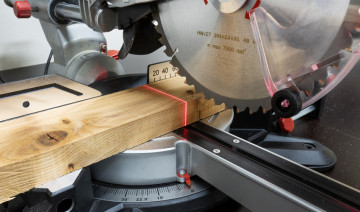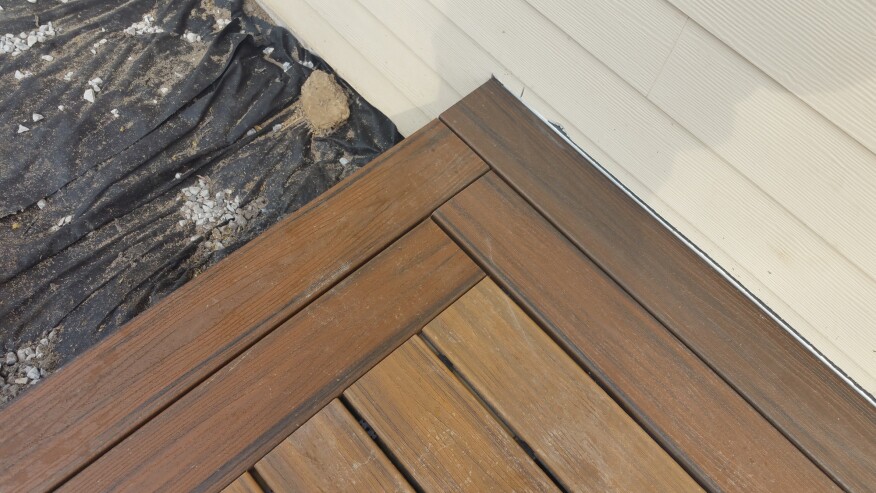
No-Miter Method for Trimming Corners
We trim most of the composite decks we build with picture-frame borders, in a color that contrasts with the field decking. At the corners of such borders, many deck builders simply cut miter joints, and while these look good at first, they don’t look good for long. As much as composite decking and PVC trim moves, shifts, shrinks, and expands with changes in humidity and temperature, those perfectly cut mitered corners can look terrible in just a matter of days.

A woven corner in a deck built by James Baldwin of Morgantown, W.Va.
That’s why we try not to use mitered corners on composite decks as much as possible. For example, at 90-degree corners, we prefer to install the border decking in an alternating herringbone pattern.

Photo: James Baldwin
When there are angles that are anything other than 90 degrees, we use what we’ve come to call “anti-miter” joints. And when trimming stairs, we typically square-cut the risers. (We still install fascia with mitered corners, because most of the fascia we use, which tends to be cupped, looks better that way.)

Photo: James Baldwin
Nobody likes to look at the core of a composite deck board or PVC trim board, though. So we bring a sample of the decking or trim that we’re using to Lowe’s and ask the store to color-match it with an exterior paint, which we then use to touch up the end cuts so they blend in with the rest of the decking. It’s almost always dead-on.

